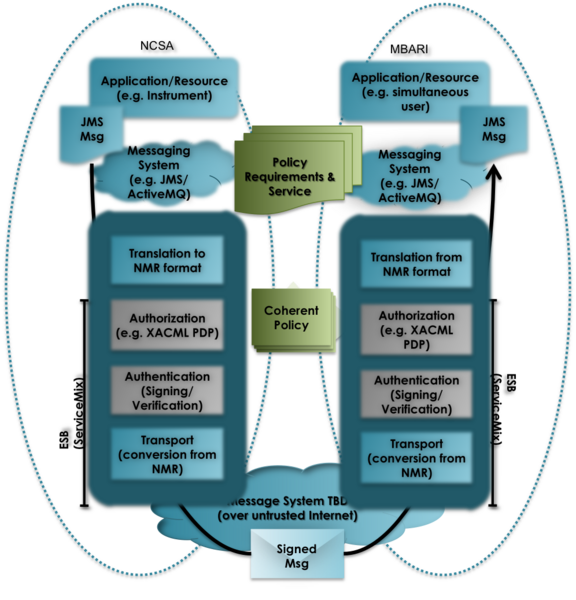
OMF utilizes an Enterprise Service Bus messaging system like those routinely used in industry today. ESBs are well suited to integrate these systems because of the performance and scalability characteristics of ESBs, and their ability to interconnect a variety of message systems, thereby easing the integration of legacy middleware. For this project, we plan to leverage the open source Mule ESB implementation.
The ESB addresses the disadvantages of existing solutions by creating a standard infrastructure for integration. Point-to-point solutions, where each of n components requires n-1 interfaces for full communication, are replaced by a bus solution where each component requires a single interface to the bus for global communication. An ESB provides distributed messaging, routing, business process orchestration, reliability and security. It also provides pluggable services which, because of the standard bus, can be provided by third parties and still interoperate reliably with the bus. ESBs also support loosely-coupled requests found in service oriented architecture, and provide the infrastructure for an Event Driven Architecture.
As environmental observatories grow more sophisticated, the ability to capture data provenance becomes more critical. Data provenance is the information that describes the origin of data: identification and description of data sources, the origin of a data stream (e.g., a sensor, software model, or processed data); and a description of algorithms used to perform data transformation (e.g., an algorithmic transformation description as in SensorML, or a reference to source code). Data provenance information can provide the ability to recreate a particular processing workflow, either manually or using automated systems. Providing complete data provenance requires metadata tracking at all stages of data life cycle, from the beginning of sensor creation through post-processing and submission of metadata back to the system. Our design of the OMF will implement the capture of provenance to its fullest.

